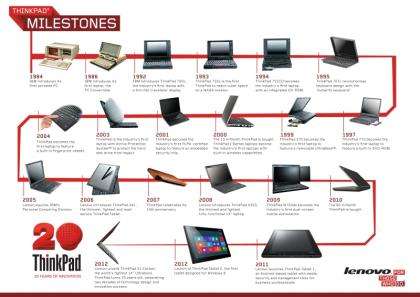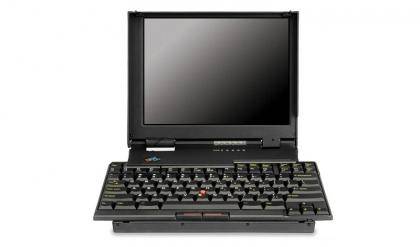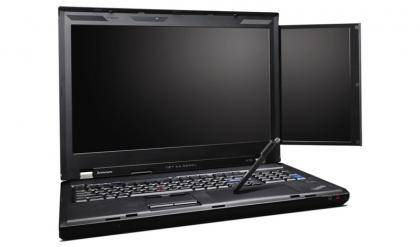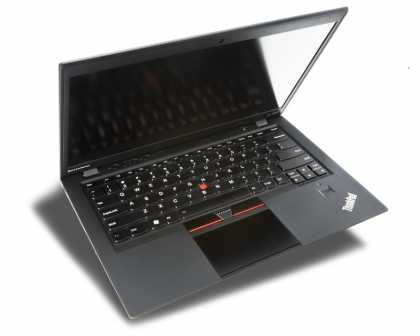Lenovo's Iconic Thinkpad laptop range is 20 years old today. Since first launching in 1992, the ThinkPad has achieved a number of firsts, including being the first laptop to come with an integrated CD-ROM, the first to include a built-in fingerprint reader and being the only laptop certified for use on the International Space Station.
Originally manufactured by IBM until the company was acquired by Lenovo in 2005, the ThinkPad has been a staple of office workers and business folk around the globe since first appearing at the now defunct Comdex trade show in 1992. The design has stayed mostly unchanged, getting thinner and lighter but retaining the iconic touchstick built into the keyboard tray.

Never afraid to experiment, IBM used the ThinkPad to trial new designs and technologies, but experienced failure as well as success. The ThinkPad 701c had a full-sized pop-up keyboard known as the butterfly, which was wider than the notebook it was built into when closed shut. The design might not have caught on, but the laptop now has a permenant place in the Museum of Modern Art in Manhattan, New York.

Lenovo tried to innovate as well, launching the ThinkPad W700ds in 2009. It was the world's first laptop to include two screens - a 17in main panel and a 10.6in secondary panel which folded outwards. Built specifically for graphic designers, the laptop even had an integrated Wacom drawing pad and stylus.

By 2010, Lenovo revealed it had sold over 60 million ThinkPad laptops, with more than 14 flying off shelves every sixty seconds. This year, the brand is thinner and lighter than ever thanks to the X1 Carbon, an Ultrabook that weighs 1.3kg.

Where Lenovo takes the name from here is difficult to say - with a greater demand for tablets and Windows 8 favouring touchscreen displays, new products such as the ThinkPad Tablet 2 may replace the classic laptop design in the future. Considering it's lasted such a long time already, we doubt the ThinkPad brand will be going anywhere any time soon.











